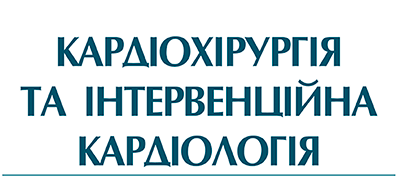Original Research
DOI: http://doi.org/10.31928/2305-3127-2018.3.2633
Anatomical and physiological features of the right heart affecting the effectiveness of balloon valvuloplasty and increase the risk of repeated interventions in children with valvular pulmonary artery stenosis
A.V. Maksymenko, Yu.L. Kuzmenko, A.A. Dovhaliuk, M.P. Radchenko, O.О. Motrechko
Scientific and Practical Medical Center of Pediatric Cardiology and Cardiac Surgery, of Healthcare Ministry of Ukraine, Kyiv, Ukraine
The aim – to study and evaluate the anatomical and physiological features of heart defects affecting the effectiveness and necessity of surgical reoperations after balloon valvuloplasty of valvular pulmonary artery stenosis in patients of the first year of life.
Materials and methods.The study of the effectiveness of the intervention was carried out on a retrospective analysis of the results of balloon valvuloplasty in 238 children under the age of 1 year with isolated pulmonary artery stenosis. The procedure was considered to be effective in such cases: (1) the pressure gradient between the right ventricle and pulmonary artery was reduced by more than 30 % compared to the initial, (2) the systolic pressure in the abdominal wall decreased by more than 30 %, (3) there was an increase in the level of oxygen saturation of arterial blood (more than 10 %) in patients with baseline low levels. The result was considered suboptimal when the residual pressure gradient on the valve of the pulmonary artery was 40 mm Hg and above.
Results. Balloon valvuloplasty of the pulmonary artery valve was effective in 98 % of infants and 90 % of children aged 29 days to 1 year. This procedure was associated with no cases of lethality and with a minimal risk of complications (1.6 %). During 5 years of follow-up, 87.8 % of newborns and 88.5 % of children between 29 days and 1 year did not require repeat surgery. The presence of dysplastic changes in the valve of the pulmonary artery (thickening of the valves and asymmetry of the sinuses) increases the likelihood of a need for repeated surgical intervention on the right ventricular tract.
Conclusions. The pronounced hypoplasia of the right ventricle and tricuspid valve, the amount of atrial interconnection and the low level of saturation after the termination of the functioning of the open arterial duct in the postoperative period are factors significantly increasing the need for interventions to optimize pulmonary flow in newborns.
Key words: pulmonary artery valve stenosis, balloon valvuloplasty, newborns.
| [PDF] | [References] |








